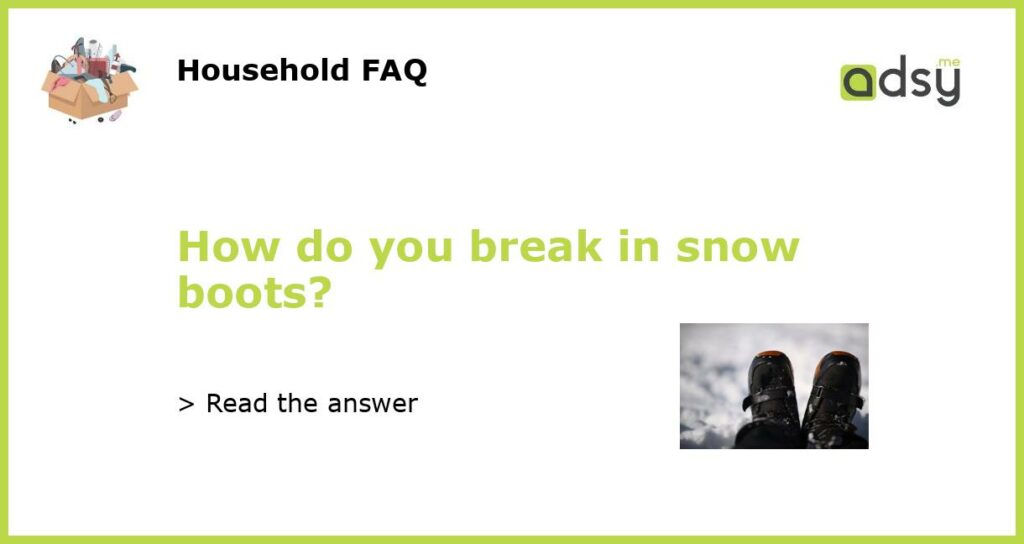Finding the Right Fit
The first step in breaking in your snow boots is finding the right fit. A well-fitting boot will provide the necessary support and comfort for your feet during long winter walks or hikes. You can try on different sizes and brands in stores, but keep in mind that some boots may stretch or shrink over time, so it’s best to choose a pair that fits snugly but not too tightly from the start. Also, consider purchasing boots with removable insoles that can be replaced with custom ones for added comfort.
Wear Them Around the House
Breaking in your snow boots doesn’t have to involve going on long walks or hikes outside right away. You can start by wearing them around the house for short periods at first to get used to the feel and fit of your new boots. This will help your feet adjust gradually and prevent blisters from forming. Take breaks between wearings and remove your boots if they become uncomfortable.
Gradually Increase Wear Time
Once you are comfortable with wearing your snow boots around the house for a short while, you can gradually increase the length of time you wear them. Start with short walks outdoors and gradually work your way up to longer hikes or snowshoeing excursions. Focus on proper walking techniques and avoid pushing yourself too hard, especially if you’re new to winter sports.
Use Boot Conditioner
Snow boots are usually made from materials such as leather, synthetic fabrics or a combination of both. To keep your boots supple and comfortable, consider using a boot conditioner specifically designed for the material of your boots. Apply the conditioner in a thin, even layer and let it dry before wearing your boots. This will help to prevent cracking and ensure that your boots remain comfortable over time.
Break Them In Before Winter
Breaking in your snow boots should ideally be done before winter arrives, when you need to use them for extended periods of time. This way, you can address any potential issues with fit or comfort before you’re out in the snow and cold weather. If you’ve missed the window to break them in before winter, try to do it during a milder spell, but be prepared to take frequent breaks and gradually increase wear time as necessary.






